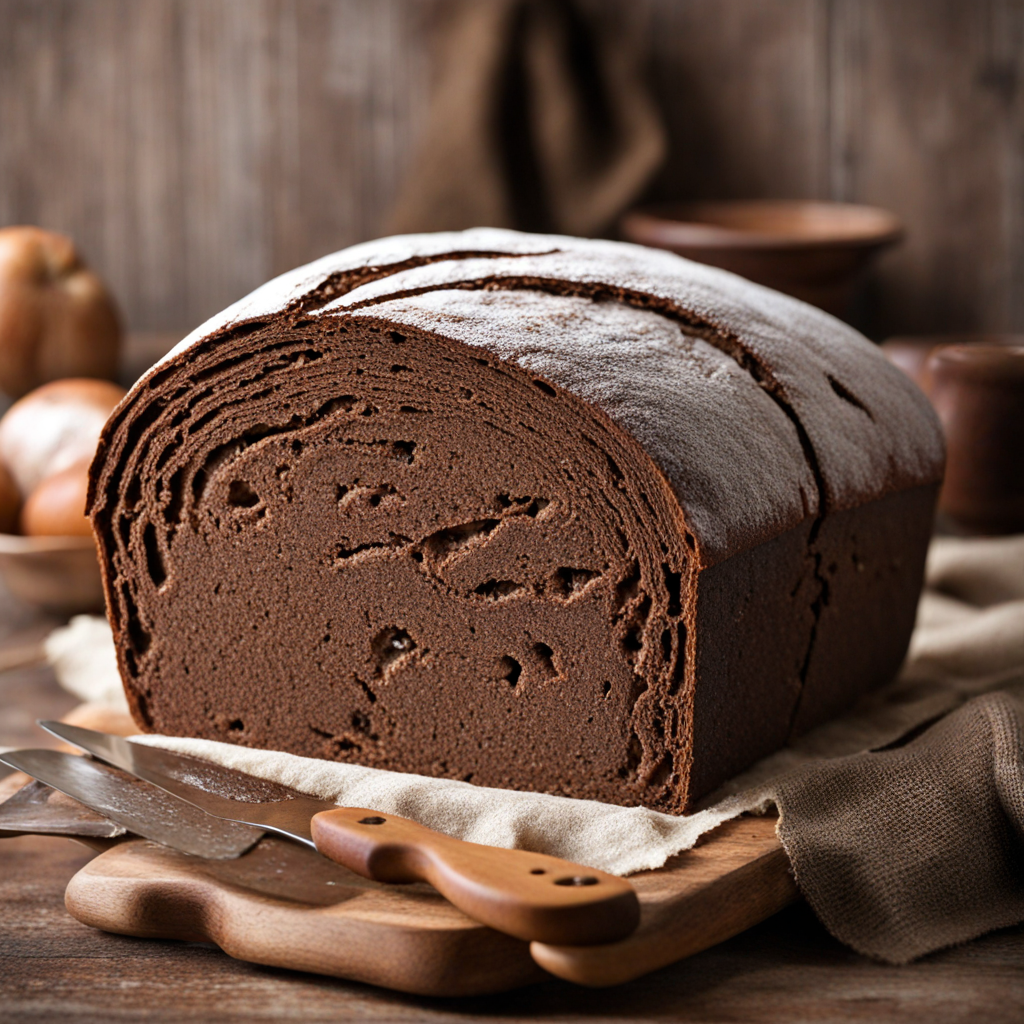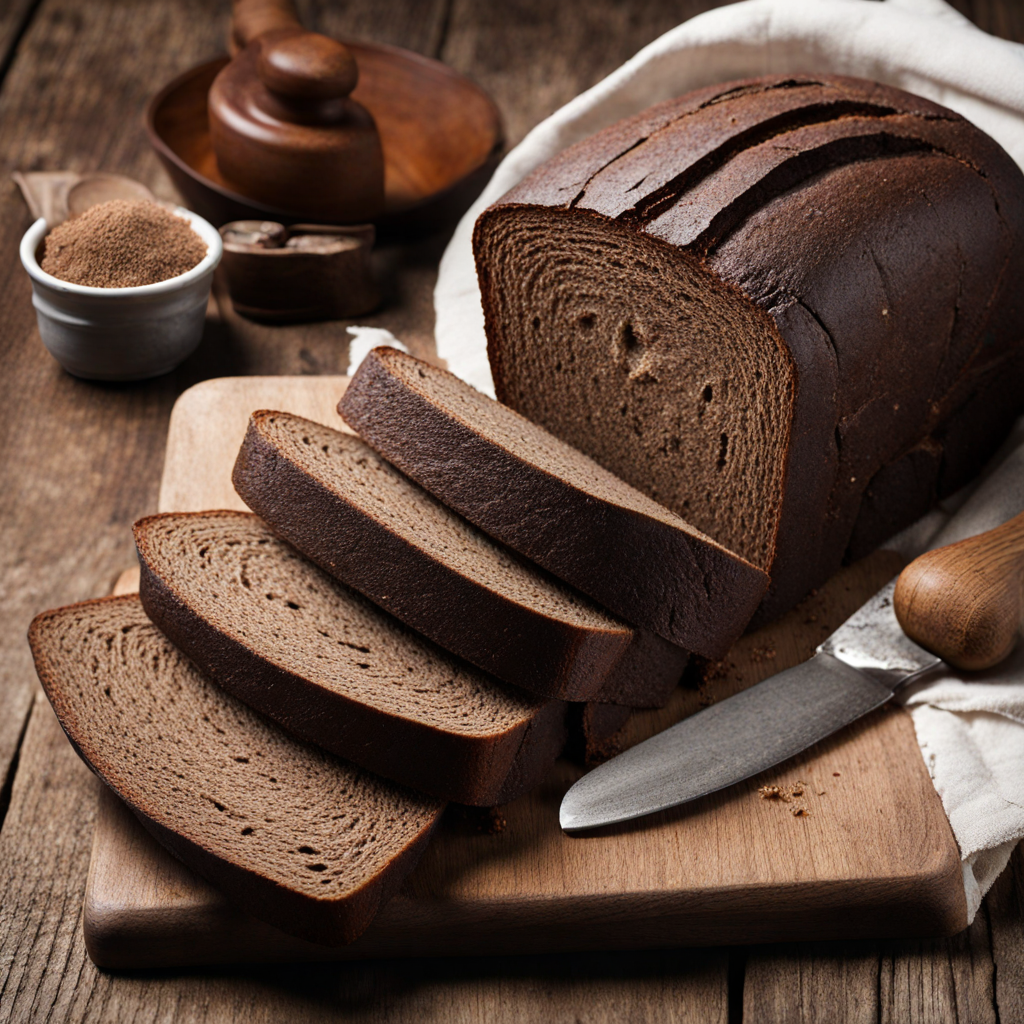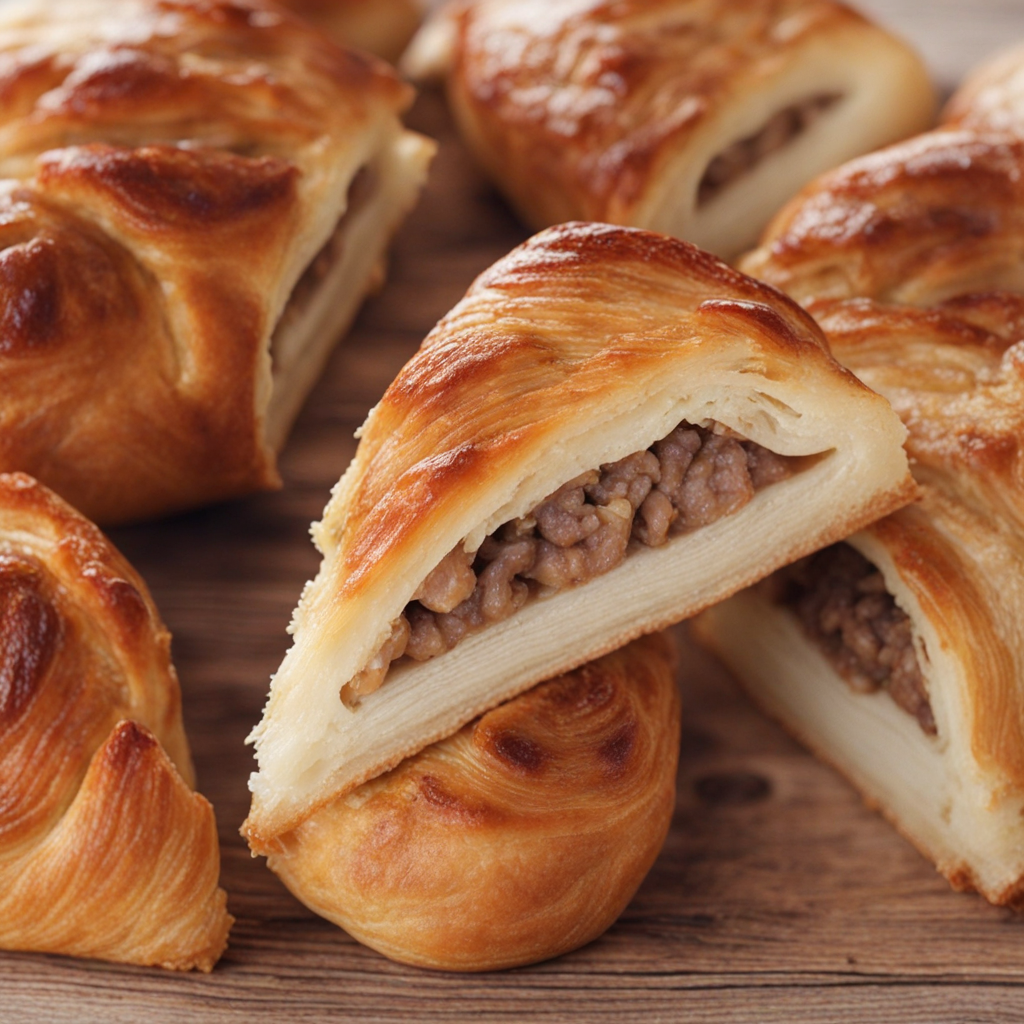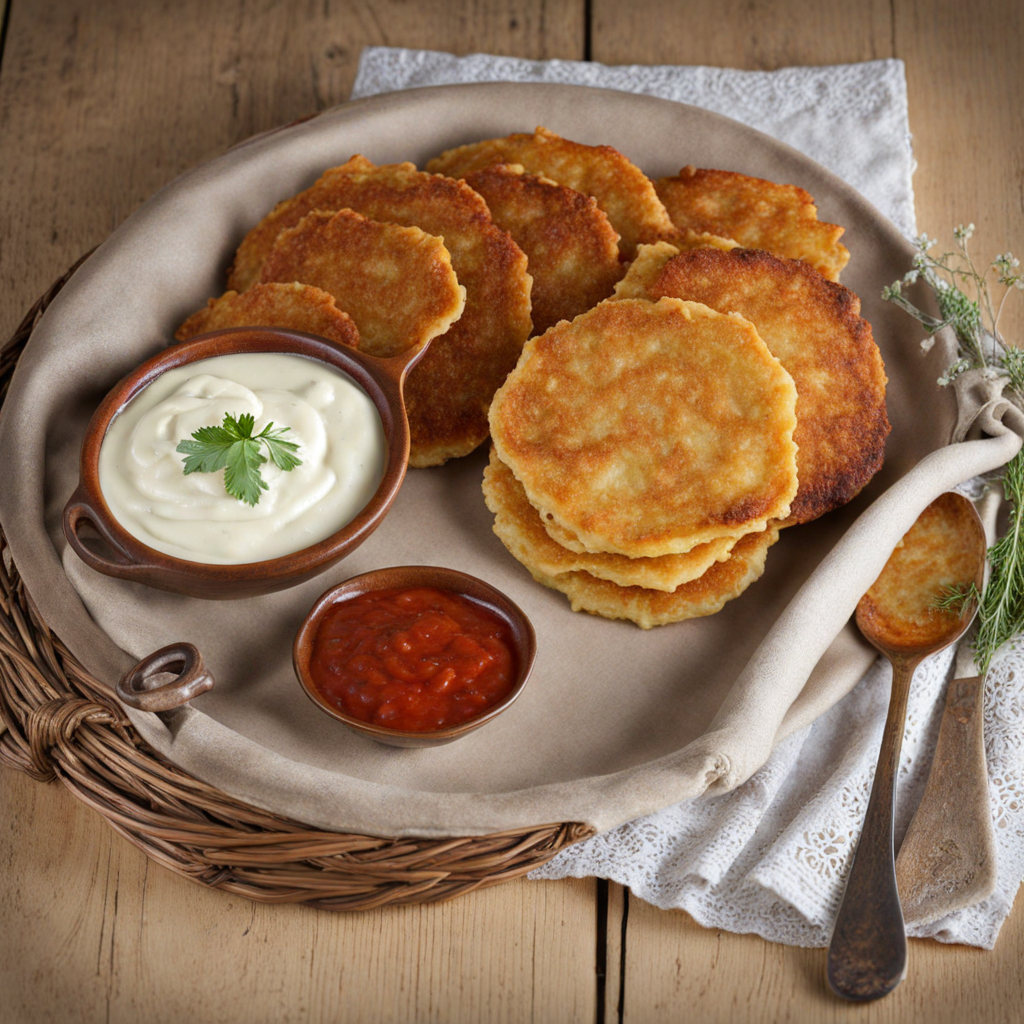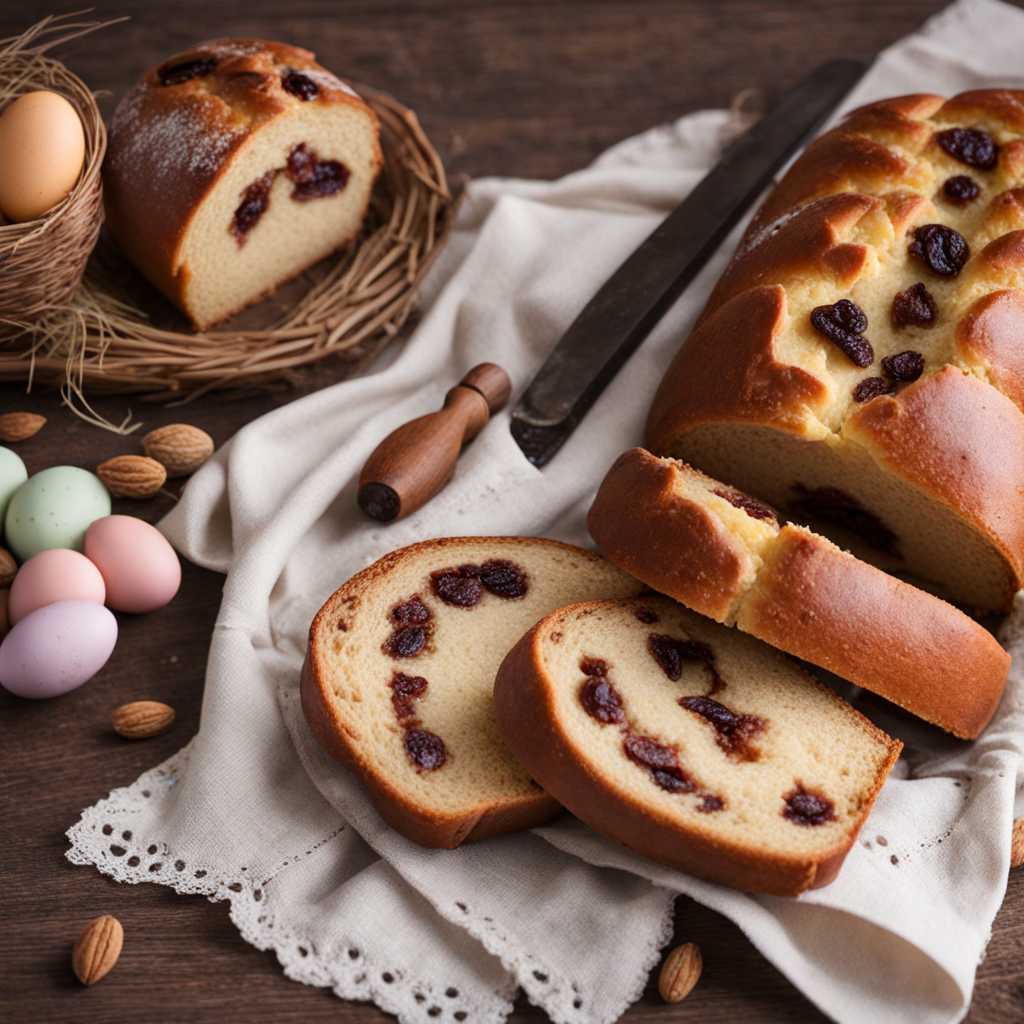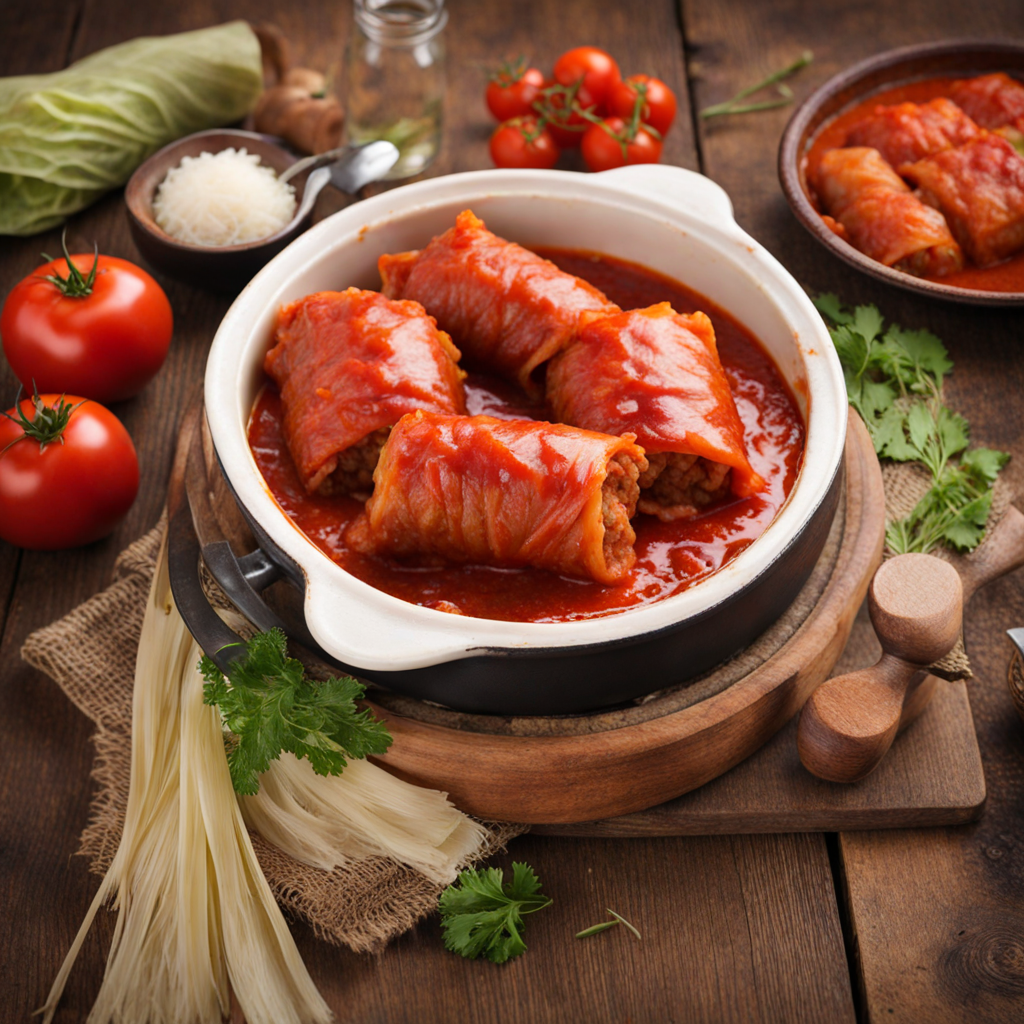Black Rye Bread
Black Rye Bread, a staple of Lithuanian cuisine, is a dense and hearty bread that boasts a rich, dark color and a robust flavor. Made primarily from rye flour, this bread is often fermented with a sourdough starter, giving it a distinctive tang that sets it apart from other bread varieties. The baking process typically involves a long fermentation period, which not only enhances the flavor but also contributes to its unique texture, characterized by a moist crumb and a slightly chewy crust. The deep, earthy taste of the rye flour is complemented by a hint of sweetness, often derived from the addition of malt or honey, making each slice a delightful experience for the palate. The appeal of Black Rye Bread lies not just in its taste, but also in its versatility. It serves as a perfect base for an array of toppings, from rich, creamy spreads to savory meats and pickled vegetables. Traditionally, it is enjoyed with hearty Lithuanian fare, such as herring or cold cuts, but its robust flavor also pairs beautifully with cheese and fresh herbs. The bread’s dense structure means it can hold up to generous toppings without becoming soggy, making it an ideal choice for open-faced sandwiches, a popular snack in Lithuania. Beyond its flavor and versatility, Black Rye Bread is also celebrated for its health benefits. Rye is rich in fiber, which aids digestion and promotes a feeling of fullness, making it a nourishing option for any meal. The fermentation process involved in making this bread enhances its digestibility and adds probiotics, contributing to gut health. With its unique taste, cultural significance, and healthful properties, Black Rye Bread invites food lovers to explore the comforting and wholesome flavors of Lithuania.
How It Became This Dish
Juoda Duona: The Heart of Lithuanian Culinary Heritage Origin and Historical Context Juoda duona, or "black bread," is a staple of Lithuanian cuisine, deeply rooted in the nation’s history and culture. The origins of this traditional bread can be traced back to the agricultural practices of the ancient Baltic tribes, who cultivated grains like rye, barley, and wheat. The harsh climate and the poor soil quality in many regions of Lithuania made rye the grain of choice, as it thrived in these conditions and was easier to grow compared to other cereals. The earliest records of bread-making in the region date back to the 13th century. Historical accounts suggest that bread was considered a sacred food, symbolizing the connection between the earth and the divine. During the Middle Ages, black bread was primarily consumed by the peasantry, while wealthier classes preferred white bread made from wheat. This division not only highlighted the dietary disparities of the time but also reinforced the social hierarchy, where rye bread became a symbol of sustenance and resilience for the lower classes. Cultural Significance Juoda duona holds a prominent place in Lithuanian culture and is often viewed as a symbol of national identity. The bread is not merely a food item; it is an emblem of the country’s agricultural heritage and communal spirit. Traditionally, Juoda duona is baked in homes using family recipes passed down through generations, and the process is often a communal activity that brings families and neighbors together. In Lithuanian folklore, bread is associated with numerous customs and rituals. For example, it is customary to greet guests with a loaf of bread and salt, symbolizing hospitality and goodwill. Additionally, during significant life events such as weddings and funerals, bread plays a central role, often featured prominently on ceremonial tables. The act of breaking bread together is seen as an essential ritual, representing unity and shared experience. The importance of Juoda duona is also reflected in the Lithuanian language, where expressions and idioms related to bread are prevalent. The phrase "Duona ir druska" (Bread and salt) encapsulates the essence of hospitality and the basic necessities of life. Development Over Time The recipe for Juoda duona has evolved over the centuries, influenced by various historical events and societal changes. During the 19th century, as Lithuania became part of the Russian Empire, bread-making techniques and ingredients began to diversify. While traditional methods remained popular, bakers started experimenting with different grains and fermentation processes, leading to variations in flavor and texture. The interwar period (1918-1940) marked a renaissance for Lithuanian culture, including its culinary traditions. Juoda duona regained prominence as a symbol of national pride amid efforts to promote Lithuanian identity. During this time, the establishment of state-sponsored bakeries helped standardize the production of Juoda duona, making it more accessible to the populace. The impact of World War II and subsequent Soviet occupation introduced new challenges for the Lithuanian people. Access to ingredients became limited, and many traditional practices were suppressed. However, the resilience of the Lithuanian spirit shone through, as families continued to bake Juoda duona using whatever resources were available. The bread became a symbol of resistance and survival during difficult times. In the post-Soviet era, as Lithuania regained independence in 1990, there was a renewed interest in traditional foods, including Juoda duona. The 1990s saw a revival of artisanal baking practices, as people sought to reconnect with their cultural heritage. Small bakeries and community ovens began to resurface, focusing on organic ingredients and traditional methods. This movement was part of a broader quest for authenticity in Lithuanian cuisine, as people began to celebrate their culinary roots. Today, Juoda duona is made using a variety of recipes and styles, with each region of Lithuania contributing its unique twist to the bread. It is commonly made with sourdough starter, which not only enhances the flavor but also contributes to the bread's dense texture and long shelf life. The use of whole grains, seeds, and even spices adds depth to the flavor profile, making each loaf a reflection of the baker’s personal touch. Contemporary Significance In contemporary Lithuania, Juoda duona enjoys a status akin to a national treasure. It is widely available in bakeries and supermarkets, often served alongside traditional Lithuanian dishes such as cepelinai (potato dumplings) and šaltibarščiai (cold beet soup). The bread is celebrated not just for its taste, but also for its nutritional value; high in fiber and low in fat, Juoda duona is considered a healthy staple. The bread also plays an essential role in Lithuania's culinary tourism, attracting visitors eager to experience the country's rich food culture. Culinary festivals often highlight traditional baking techniques, where local bakers demonstrate the art of making Juoda duona, allowing both locals and tourists to appreciate the craftsmanship involved. Moreover, the global trend towards healthy and artisanal foods has led to increased interest in Juoda duona beyond Lithuania’s borders. International chefs and food enthusiasts are embracing the bread for its unique flavor and historical significance, integrating it into contemporary dishes and fusion cuisines. Conclusion In summary, Juoda duona is more than just a type of bread; it is a vital component of Lithuania's cultural and historical landscape. Its journey from ancient agricultural practices to contemporary culinary pride reflects the resilience and adaptability of the Lithuanian people. As Juoda duona continues to be baked in homes and enjoyed at tables across the country, it serves as a poignant reminder of Lithuania’s rich heritage and the enduring power of food to unite communities and celebrate identity. Through each loaf, the spirit of Lithuania is baked in, creating a timeless connection to the past while nourishing the present.
You may like
Discover local flavors from Lithuania


